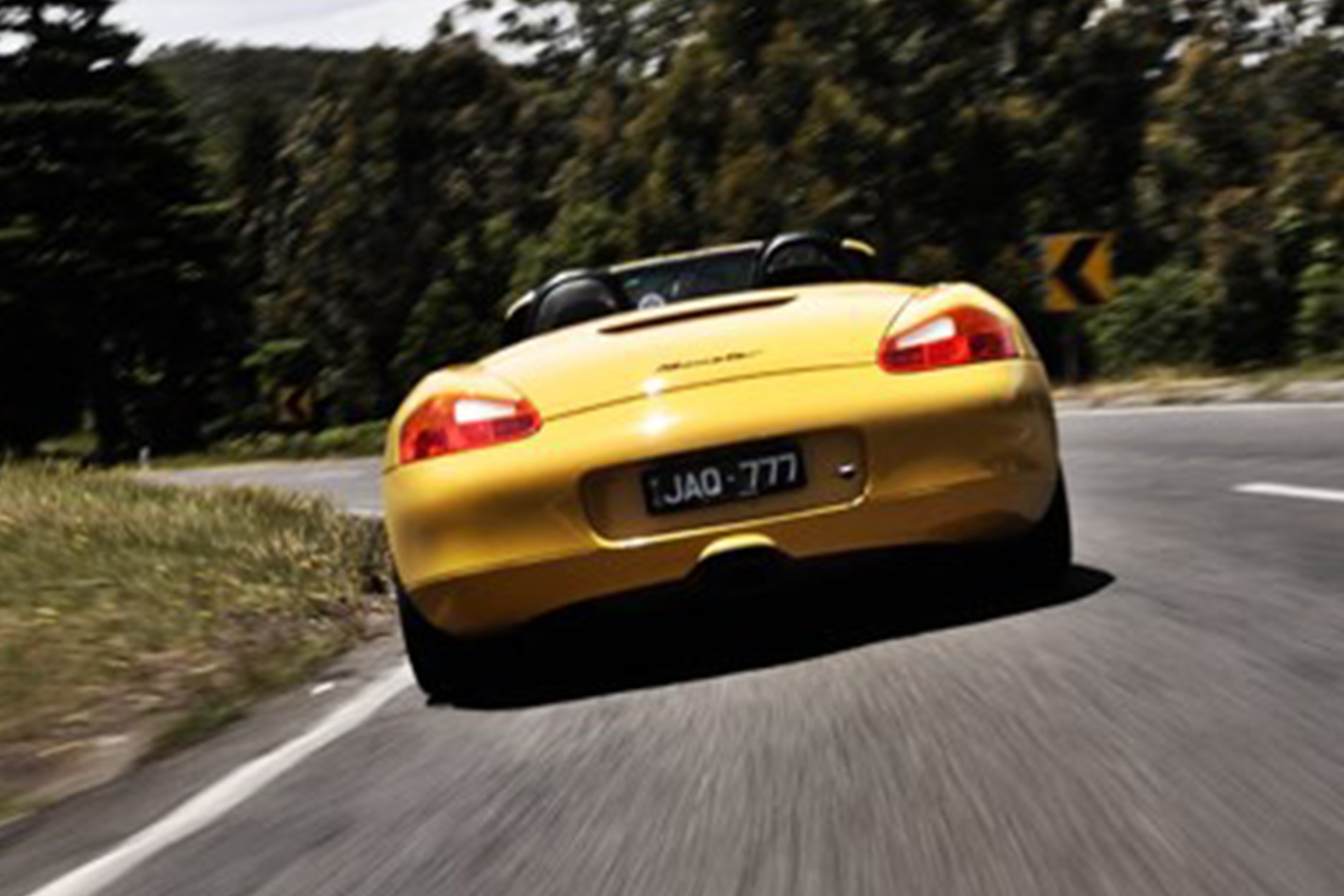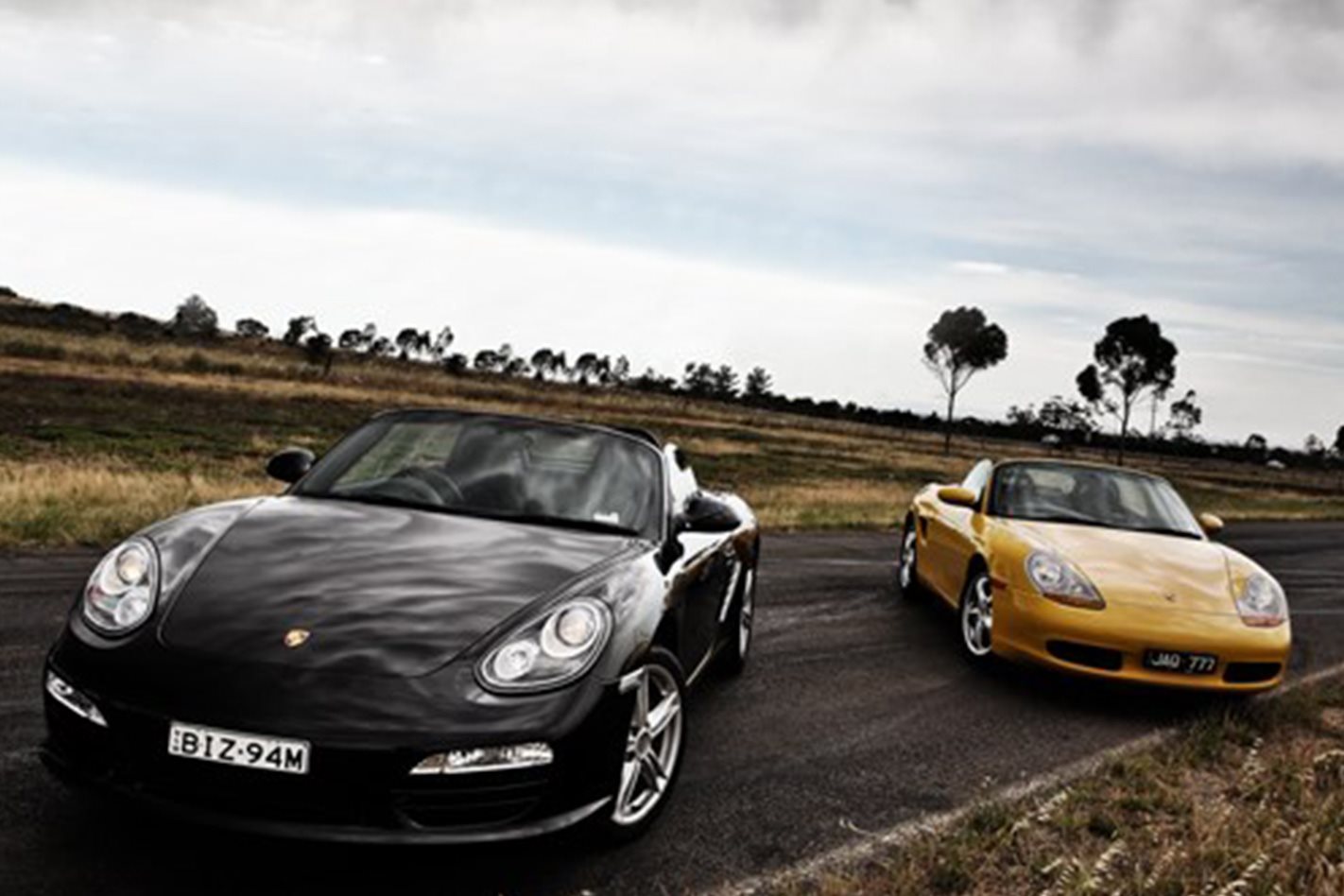You can easily underestimate the impact the original Porsche Boxster had on the world, the sweet roadster that first hit Aussie blacktop back in February 1997.
See, until then, Porsche was a one-model brand; a commercial situation that even the people closest to it could see just wouldn’t be viable in the long-term.
The bottom line was that Porsche needed an entry-level car and the concept of a two-seater, mid-engined drop-top that evoked the spirit of the original Porsche Spyder of the 1950s was seen, even before it was launched, as a pretty smart way to go.
Check out more of MOTOR’s Porsche news
What we didn’t know, of course, was just how gorgeous the original 986-generation Boxster was going to be, in pretty much all departments.
The car’s big worry back then was the thrust – or lack of it – from the 2.5-litre engine stuck up the Boxster’s bum through 1996 to 1999. Oh, sure, it was as sweet as your first kiss, but it wasn’t until the 2.7-litre engine came along in 2000 that the urge deficit (and a few mechanical dramas) in the base Boxster were ironed out.Which brings us to the yellow car on these pages – a 2001 986 2.7-litre five-speed manual. Given that Porsche has a rich tradition of refining and evolving a model’s mechanicals without messing with the styling, it’s tempting to think that a brand-new 987-gen Boxster might just run rings around the older car.

But does it translate to the Boxster?Erm, no, not really. And while there’s definitely been progress, the original Boxster was so far ahead of its time, and its chassis so good first time out, that it still feels great to drive today.The cabin is showing its age, with those oval switches that were too cool for school back at the turn of the century. There’s no cup-holder or glove box (the owner’s manual lives in a pocket under the steering column marked ‘Afterthought’).The script on the LCD readouts feels old-hat, too, and the power window switches are in the console, not on the door as they are in the new model, where they should be.But the tiller is lovely, less fussy than the big-horned PDK wheel, with a thinnish rim for a great tactile experience. The old cabin itself does feel a bit narrower than the newie, but clearly sound ergonomics and nice, low seating was on the Boxster drawing board from the get-go.And despite its age and 96,000 fairly hard kilometres, the leather and plastic still looks good.One of the biggest steps forward has been the move to a glass rear window rather than the early car’s plastic job. To avoid crimping the plastic window, the trick is to drop the roof about a quarter of the way, jump out and manually start folding the roof somewhere other than the window, jump back in and finish lowering the lid.

The 2009 car makes 188kW – three more than the original Boxster S 3.2-litre donk – from its 2.9 litres. Meanwhile, the early girl makes do with 162.
The gap feels bigger than that, to be honest, and 290Nm versus 260 tells the rest of the story. Once you’re up and rolling, the 2.7 does a fine job, but it’s that bit harder to get out of the hole, even with its manual gearbox.That said, when we first tested the then-new 2.7 (MOTOR, August 2000), it clocked 6.3sec to 100 and 14.5 for 0-400m. Our times for an ’09 manual back in August were 6.3 and 14.4 respectively, though that car wouldn’t rev beyond 6000rpm in first gear (and its redline is seven-two).The oldie is also 65kg lighter than the newie. While the new car’s PDK clutchless masterpiece runs with seven forward speeds and more brains than the Space Shuttle, there’s no getting around one single, but salient, point: in a car like the Boxster, swapping your own gears really is its own reward.
And when the shift is as sweet as the 2.7’s five-cogger, let alone the current slick six-cogger, there’s no excuse for not having the manual.
Okay, so some of you will have guessed that much already, but one big surprise is that the older engine is actually the smoother of the two. It lacks the stick-flick soundtrack of the new car, but it’s definitely sweeter and less wholegrain.In handling terms, there’s less in it than we’d have thought. True, the Porsche’s R-spec tyres give it loads of grip (and loads of road noise), but both are delightfully balanced and fluid, feed back with clarity and respond with supreme accuracy. Back-to-back, they’re clearly from the same stable.All of which makes a second-hand Boxster an incredible bargain. Take the time to find a 2.7 in manual and you’ll be cruising on Quality Street.And when you see them parked side-by-side, you might even agree with me that the slightly more feminine early car, with its classic Porsche wheel styling, is the (slightly) better looking, too.




